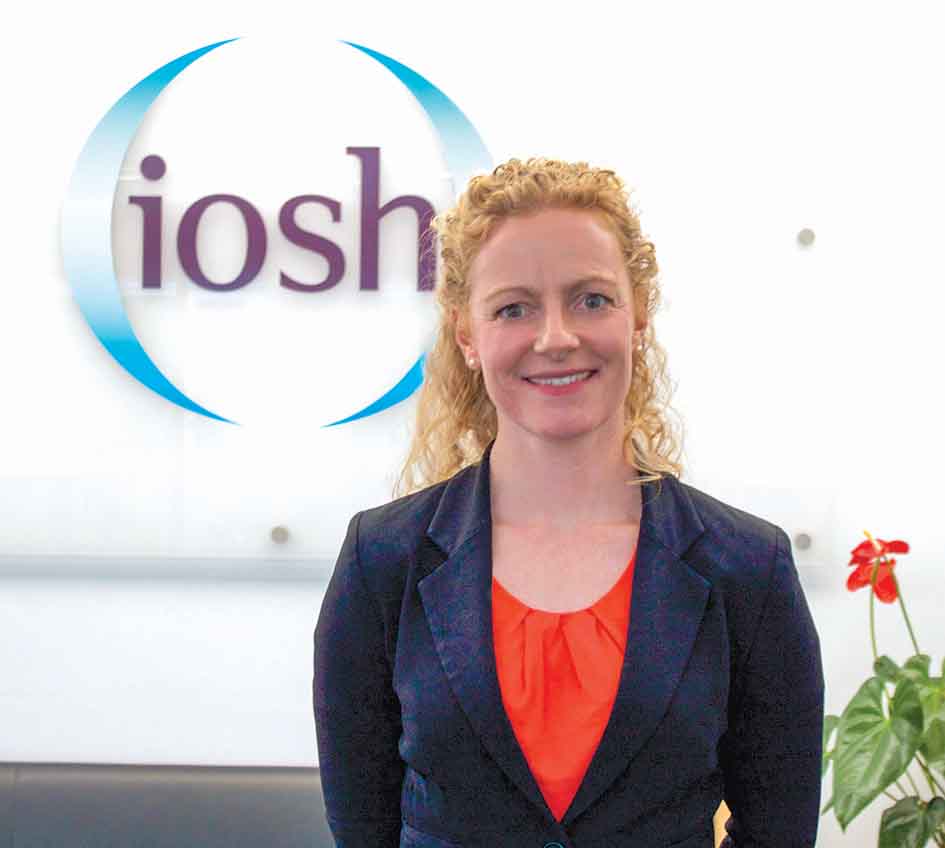
Shelley Frost, Executive Director – Policy, at the Institution of Occupational Safety and Health (IOSH), says strong leadership is key to ensuring health and safety in and around quarries.
We all have the power to influence the behaviour of others through our own actions. This is especially true in the workplace and of senior leaders within an organisation. As well as setting the overall business agenda, their actions and attitude can often be reflected throughout a company and its employees, both positively and negatively.
Take attitudes towards safety and health. Strong leadership throughout an organisation is one of the most fundamental drivers of a successful safety and health strategy. A lack of leadership, on the other hand, can cast doubt on a programme or strategy, and have a lasting negative impact on an organisation. Having worked within the mining sector, I know the industry has zero-harm ambitions.
I have seen a lot of good work being done across the sector with an increasing focus on public safety, LOTOTO, workplace transport and sustainability to name a few.
There is still a way to go, however, until the industry is harm-free. While deaths are thankfully rare in UK aggregates, incidents, injuries and near misses continue to occur.
Ensuring workers’ health is also equally as important as their safety and some of the main challenges the sector is facing at present relate to workrelated ill health.
Aggregates is not the only industry in which its workers are known to suffer musculoskeletal disorders. Dust exposure is also a risk with employees potentially being exposed to the likes of silica dust throughout the quarrying process. Heavy, prolonged exposure to silica dust can lead to the development of chronic obstructive pulmonary diseases such as bronchitis or emphysema, as well as silicosis and lung cancer.
The Health and Safety Executive estimates that in order to prevent people from developing any of these lung diseases, workers should breathe in no more silica dust than if gathered together would produce a clump around the size of half a grain of rice. Sadly, nearly 800 people a year die in the UK as a consequence of having breathed in respirable crystalline silica at work.
It has been estimated that if compliance with current control measures was increased from present levels – estimated at around 30% – to 90%, then around 600 cases a year of work-related lung cancer deaths could be prevented.
The causes of work-related cancers are often predictable and preventable. Small changes in how work is managed or carried out can make a real difference in the level to which workers are exposed to carcinogens, and the resulting risk of developing cancer.
IOSH is currently running a campaign called No Time to Lose which is raising awareness of occupational cancers and offering businesses help to take action to prevent workers being exposed to carcinogens.
The initiative sheds light on the subject as a whole, while also providing key information about tackling five of the most common factors associated with workrelated cancer registrations and deaths in the UK – asbestos, diesel engine exhaust fumes, silica dust, solar radiation and shift work. IOSH will be publishing new guidance around the issue of silica dust in March.
More information about the campaign can be found online at www.notimetolose.org.uk Treating safety and health as a core business value is key. I believe strong leadership is one of the most successful and sustainable ways to foster a safety culture within an organisation, particularly through visible felt leadership.
The concept of visible felt leadership centres on being seen, doing the right things so people see and feel your positive influence, and sense that you really have value for doing those things. It is about your actions being seen, felt and believed. This in turn influences behaviour.
Later this year, the first internationally-agreed health and management system standard to apply to organisations across the world is due to be published. The standard, called ISO 45001, will replace BS OHSAS 18001 and have a greater emphasis on leadership, worker involvement, context and documented information.
It will add an important new requirement for top management to demonstrate its leadership and commitment by taking accountability for the effectiveness of its occupational safety and health procedures. The Institution believes great leadership is the backbone to a business’s success in every aspect of the company.
By encouraging more organisations to share this belief, we hope our vision of a safer, healthier and more sustainable world of work can be achieved.





